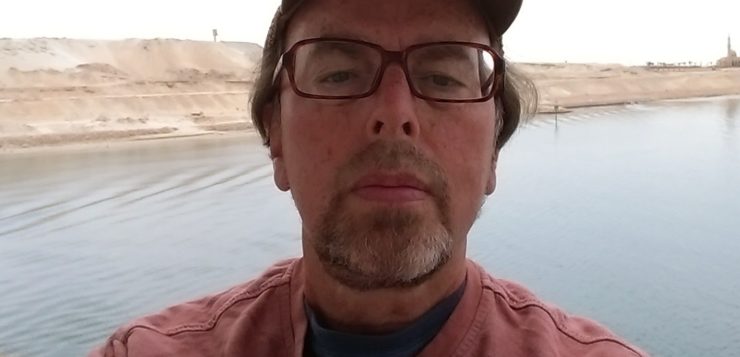JENNY TOLD ME that her mother had died, and that the funeral would be this weekend. Old Mrs. Adams lived to be almost 100, and I’d known her and her seven children well. I’d gone to school with them and worked with them and socialized with them over the past sixty years. There was 4-H, roller skating, Burlington County Fairs, VFW dances, Moose and Elk dinners, and all manner of small-town Americana in our shared past. Long ago this prosaic past was like thin ice treacherously covering the swollen and cedar stained waters of the Rancocas Creek.
The night has come, and the land is dark.
— Ben E. King, “Stand By Me,” 1961
The funeral would be held in Vincentown, New Jersey, a very small village that used to be surrounded by working farms but was now being tightly encircled by “farmettes”: five-acre-minimum plots presided over by rising executives who complain about the smells of manure and the dust stirred up by John Deere cultivators on the few remaining farms woven into the warp and woof of exurbia. The farmers who had sold their land were very rich, and most of them had moved away. Those who stayed, like several of the Adams children, had acquired expensive habits: horses, antique cars, expensive vacations, second homes, and younger more fashionable spouses.
And what rough beast, its hour come round at last, slouches toward Bethlehem to be born?
— W.B. Yeats, “The Second Coming,” 1920
I looked in the mirror. The nearly three years of chemo, radiation, and highly toxic hormonal therapy had not been kind. Why hadn’t Mrs. Adams died three years earlier? This really was inconsiderate of her; I wanted to make a grand entrance in funereal black, but now, oh well. Hugo Boss cashmere jacket, white shirt, scarlet silk tie shot through with black, black lightweight wool pants with grey pin stripes, black Bally wing tips. I looked in the mirror again, and abracadabra, presto-change-o, allakazam, I’m all right again, Oh yes, I am. I knew that I would be the most striking-looking man at that funeral, old, sick, or not. I felt like a magician.
I pulled into the church parking lot after driving through a landscape that seemed smaller and meaner and sadder than I remembered. I preferred my memory to the current reality and made a mental note that I didn’t ever need to return here. This land was irrelevant and dead to me.
However, the man smoking outside the church door was very much alive. He took a drag on his cigarette and said, “Is it really you?” I took a deep breath and smiled at him and he smiled back. We chatted about people we knew, and I thought that this was very different from our last encounter. I had driven to his place and he’d shown me a barn he’d just built and all the cars and bikes inside that he was working on. I told him that I couldn’t stay too long, as I planned to visit another old friend, when all of a sudden, he launched into a tirade about fags getting married and how much he hated this shit and what I thought about it. He added that when people saw him with me, they had assumed he was “playing for the other team” and speculated that we were having sex.
I was ambushed by this, and by the fact he was talking and talking and was going to make me late for my other appointment. Later I thought about everything he’d said, and I realized that he couldn’t reconcile being a man (in his terms) with the fact he’d once had an intense emotional and physical relationship with another man. That man was me.
I’m so sick of this same old love.
— Selena Gomez, “Same Old Love,” 2015
I had resolved all of these issues for myself many decades ago. I was a gay man, and that was that. He had been a problem long ago, and he was not going to be a problem now. I called him up and told him that being around him made me feel that I had to filter and censor my behavior. Was my wrist too limp that day, was I lisping, sashaying my hips back and forth when I walked, looking longingly at other men’s crotches? I didn’t tell him I was with another man and had been for nearly forty years, and was now married to that man.
I knew this information would make him crazy for a number of reasons. I just said that I couldn’t play a role. I wanted to be who I was, and I felt I couldn’t discuss my present life because he’d find almost every aspect of it disturbing to him. I also told him that he was very important to me in a profound and formative way. I didn’t intend to see him again. I forgot that we knew a number of people in common and that there’d be funerals, weddings, milestone anniversaries, and birthdays, and now here we were at Mrs. Adams’ funeral.
I entered the church and sat in a pew at the very back of the church. I listened to the sermon and the eulogy, and I looked around and saw groups of old men talking and looking at me. The service was over and it was time to go up to the coffin and pay one’s respects to the deceased and to her children. I stood up and thought, if those old hayseeds want a show, I feel prepared to give them one. I sucked my gut in and threw my chest out and walked down that aisle like it was a runway in Milan. The immediate family was very happy to see me. I left just as the sun burst out from the clouds, and I felt blessed by old Mrs. Adams and fate in general. I was alive and, just like Popeye, I was what I was supposed to be.

Tom McCarron, married to Richard Keiser, was a pharmacologist and a statistician involved in evaluating clinical trials supporting new drug applications. He has also taught courses related to these activities at the university level, and developed tours and written materials pertaining to Philadelphia history and architecture.






